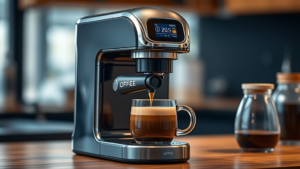Pregnancy is a magical journey, but it comes with its own set of worries due to high-risk factor in some cases. Thanks to AI, the future of prenatal care is looking brighter, especially for those facing high-risk pregnancies. From ultrasounds to delivery, AI is stepping in to make things safer and smoother.
Key Takeaways
- AI is changing how ultrasounds work, making them more accurate and less prone to mistakes.
- In fertility treatments like IVF, AI helps pick the best embryos, boosting success rates and cutting costs.
- Remote monitoring with AI means pregnant women can keep an eye on their health from home, getting alerts for any risks.
- AI is even helping in the delivery room, assisting doctors and providing better scheduling and emotional support.
- With machine learning, predicting and managing high-risk pregnancies is becoming more effective, improving outcomes for moms and babies.
AI-Powered Ultrasound in Prenatal Care

Enhancing Fetal Health Monitoring
In the realm of prenatal care, AI-powered ultrasound systems are transforming how we monitor fetal health. These digital prenatal care solutions offer a more precise analysis of fetal development. AI technology surpasses human capabilities in detecting subtle abnormalities, ensuring that potential issues are caught early. This is especially critical in busy clinical settings where traditional methods might miss these nuances. With AI, the ultrasound process becomes more efficient and reliable, supporting sonographers in delivering accurate results.
Reducing Sonographer Errors
Sonographer errors can significantly impact the accuracy of prenatal assessments. AI-powered prenatal monitoring systems minimize these errors by using advanced algorithms to interpret ultrasound images. By automating parts of the diagnostic process, AI reduces the reliance on human interpretation, which can vary based on the technician’s experience. This leads to more consistent and dependable results, providing peace of mind for expecting parents.
Improving Diagnostic Accuracy
AI’s ability to enhance diagnostic accuracy in prenatal care is a game-changer. By integrating machine learning with ultrasound technology, these systems can identify patterns and anomalies that might not be visible to the human eye. This not only improves the accuracy of the diagnosis but also speeds up the entire process, allowing for timely interventions if needed. AI-driven innovations, like those from BrightHeart, are setting new standards in prenatal diagnostics, offering clinicians a powerful tool to ensure the best outcomes for both mother and child.
AI in Fertility and IVF Procedures
Streamlining Embryo Selection
Choosing the right embryo during IVF is a big deal. It’s tricky but crucial for success. Traditional methods rely on a trained eye to pick the best embryos, but this is where AI steps in. By analyzing thousands of embryo images, AI can identify the best candidates with remarkable precision. AI tools are revolutionizing this process, offering a thorough assessment of embryos. An AI-based tool aids embryologists in evaluating embryo quality and ploidy status, making the selection process faster and more reliable.
Increasing IVF Success Rates
Let’s face it, IVF is expensive and emotionally taxing. With AI, the odds of success are improving. Advanced algorithms analyze data from previous cycles, hormone levels, and other factors to predict the best time for implantation. This not only boosts the success rate but also reduces the number of cycles needed. The result? More happy families with fewer attempts.
Reducing Costs of Fertility Treatments
IVF isn’t cheap. Costs can skyrocket, especially when multiple cycles are involved. AI helps to cut down these expenses by improving efficiency. By predicting the best embryos and optimal timing, AI reduces the need for repeated procedures. This means fewer drugs, fewer appointments, and less stress on your wallet.
AI is not just a tool; it’s a partner in the journey to parenthood, making the dream of a family more accessible and affordable for many.
Remote Monitoring of Pregnancy Risks

Utilizing IoT and Wireless Sensors
In today’s world, technology and remote monitoring are bridging the gap in maternal care by offering tools that deliver essential support directly to at-risk expectant mothers, enhancing their access to healthcare. Pregnancy monitoring has taken a leap forward with the integration of IoT and wireless sensors. These advanced pregnancy risk assessment tools are designed to keep a close eye on the health of both mother and baby, providing continuous data collection and analysis. Sensors can monitor vital signs like heart rate, blood pressure, and temperature, sending real-time updates to healthcare providers. This allows for timely interventions when any sign of distress is detected, making it a game-changer in high-risk pregnancy management software.
Continuous Monitoring of Vital Signs
Continuous monitoring is a key component in assessing pregnancy risk. With the help of IoT devices, vital signs are tracked round-the-clock, offering a comprehensive view of the expectant mother’s health. Imagine having a system that could alert healthcare professionals at the first hint of trouble, ensuring swift action. This isn’t just about technology; it’s about peace of mind for families. The data collected can be analyzed using machine learning algorithms, further refining the predictive capabilities of these systems.
Timely Alerts for High-Risk Pregnancies
Timely alerts are crucial in managing high-risk pregnancies. Advanced pregnancy risk assessment tools can predict potential complications before they become critical, thanks to real-time data analysis. Healthcare providers are notified immediately, allowing them to take necessary actions to prevent any adverse outcomes. This proactive approach not only improves outcomes but also reduces anxiety for the expectant mother and her family.
Remote monitoring of pregnancy risks isn’t just about gadgets and gizmos; it’s about providing a safer journey for mothers and their babies. With the right tools, we can make sure that help is always just a heartbeat away.
AI-Assisted Child Delivery
Robotic Assistance in Labor Rooms
In the world of childbirth, AI healthcare is stepping up, offering a helping hand with robotic assistance in labor rooms. These robots aren’t here to replace the comforting presence of doctors and nurses but to support them. With clinical decision support systems, robots can assist in scheduling and monitoring, ensuring everything runs smoothly. Imagine a robot helping to keep track of the timing and sequence of labor stages, freeing up medical staff to focus more on the patient.
Improving Scheduling and Accuracy
AI’s role in childbirth isn’t just about physical assistance. It’s also about making sure everything is on point timing-wise. AI systems can analyze vast amounts of data to predict the best times for different stages of labor. This means more precise scheduling, reducing the chaos that can sometimes occur in busy hospitals. These systems can achieve accuracy levels that rival even seasoned professionals, making them a valuable tool in the delivery room.
Enhancing Emotional Support During Delivery
While robots might not be known for their bedside manner, AI is finding ways to enhance emotional support during delivery. By analyzing data from sensors and patient feedback, AI can help the medical team understand when a patient might need extra support or intervention. This way, the human touch remains at the forefront, with AI ensuring that the emotional needs of the mother are met alongside the physical ones.
AI in healthcare is not just about technology; it’s about creating a better experience for mothers and their babies. By integrating AI into labor and delivery, we can ensure a safer and more supportive environment for everyone involved.
Machine Learning in High-Risk Pregnancy Prediction
Analyzing Maternal Health Data
Machine learning is transforming how we monitor high-risk pregnancies. By analyzing vast amounts of maternal health data, these algorithms can identify patterns and predict potential gestational complications. This means doctors can act sooner, potentially preventing serious issues before they arise. Data such as blood pressure, weight, and medical history are all fed into these systems, allowing for a more comprehensive view of a pregnant woman’s health.
Predictive Models for Complications
Predictive models are at the heart of machine learning pregnancy monitoring. They use historical data to forecast potential complications, like preeclampsia or gestational diabetes. For instance, a study explored using decision trees and other algorithms to predict pregnancy risk levels, enhancing the accuracy of these predictions. These models are constantly evolving, becoming more accurate as they process more data.
Improving Birth Outcomes with AI
AI isn’t just about prediction; it’s about improving outcomes. By identifying high-risk pregnancies early on, healthcare providers can tailor their approach, offering more personalized care. This proactive approach can lead to better birth outcomes, reducing the risk for both mother and child. It’s a game-changer in maternal healthcare, offering hope and reassurance to expectant mothers everywhere.
With machine learning, the future of prenatal care looks promising, with technology paving the way for safer pregnancies and healthier babies.
AI and Pre-eclampsia Monitoring

Early Detection of Hypertensive Disorders
Pre-eclampsia is a tricky condition that sneaks up during pregnancy, often leading to serious complications if not caught early. AI technology is stepping up to the plate, offering a way to spot these issues before they escalate. By analyzing patterns in a pregnant woman’s health data, AI systems can predict the onset of pre-eclampsia, giving doctors a heads-up to intervene sooner rather than later. This early warning system can be a game-changer, potentially saving lives and reducing the number of emergency situations in maternity wards.
Integrating IoT for Continuous Monitoring
Imagine a world where a simple wearable device keeps tabs on a mom-to-be’s vital signs 24/7. That’s the power of the Internet of Things (IoT) combined with AI. These smart devices can track blood pressure, heart rate, and other critical health metrics, sending real-time updates to healthcare providers. This constant stream of data means that any worrying changes can be flagged immediately, allowing for quick action. It’s like having a personal health assistant that’s always on the job, ensuring both mom and baby are in the best possible hands.
Improving Maternal and Fetal Health
AI isn’t just about catching problems early; it’s also about making sure the whole pregnancy journey is as smooth as possible. With the ability to process vast amounts of data, AI tools can offer personalized health recommendations to expectant mothers. Whether it’s dietary advice, exercise tips, or reminders for check-ups, these insights help keep both mother and child healthy. Plus, with AI-driven systems, healthcare providers can focus more on care and less on paperwork, leading to better outcomes for everyone involved.
As technology advances, the vision of a safer and more predictable pregnancy experience becomes more achievable. AI and IoT are not just buzzwords; they’re paving the way for a future where pregnancy complications like pre-eclampsia are not just managed, but proactively prevented.
AI-Driven Innovations in Maternal Healthcare

Revolutionizing Prenatal Diagnostics
Artificial intelligence is making waves in prenatal diagnostics. By analyzing vast amounts of data, AI systems can spot patterns that might be invisible to the human eye. This means expecting mothers can get more accurate assessments earlier in their pregnancies. AI helps doctors identify potential risks sooner, which can lead to better outcomes for both mother and child.
Enhancing Patient-Doctor Connectivity
In the world of digital maternity care, AI plays a crucial role in enhancing communication between patients and healthcare providers. AI-powered chatbots can answer common questions, schedule appointments, and even monitor symptoms remotely. This connectivity ensures that mothers receive timely advice and interventions without needing to visit the clinic for every concern.
Future Prospects of AI in Pregnancy Care
The future of artificial intelligence in maternal healthcare is promising. We’re looking at AI systems that can predict pregnancy complications with higher accuracy, potentially reducing maternal and infant mortality rates. Moreover, integrating AI with IoT devices could provide real-time monitoring of vital signs, offering peace of mind to expectant mothers and their families.
As AI continues to evolve, its application in maternal care will likely expand, offering more personalized and efficient healthcare solutions. The journey is just beginning, and the possibilities are endless.
Conclusion
AI is shaking things up in the world of pregnancy and childbirth. It’s not just about predicting risks anymore; it’s about preventing them, too. With AI, we’re seeing a future where infertility might be a thing of the past, and pregnancy complications could be caught early, saving lives. From ultrasounds to IVF, AI is making these processes faster and more accurate. It’s like having a super-smart assistant that never sleeps. Sure, there are still some kinks to work out, but the potential is huge. As we keep pushing the boundaries, who knows what other breakthroughs we’ll see? One thing’s for sure: AI is here to stay, and it’s changing the game for moms and babies everywhere.
Frequently Asked Questions
What is AI in prenatal care?
AI in prenatal care uses computer technology to help doctors check on a baby’s health before birth. It can find problems by looking at ultrasound pictures better than the human eye.
How does AI help with IVF?
AI helps with IVF by picking the best embryos to use. This makes the chances of having a baby higher and can also make the process cheaper.
Can AI watch over pregnancy risks from far away?
Yes, AI can use special gadgets to keep an eye on a pregnant woman’s health signs, like heart rate and blood pressure, even from a distance. This helps doctors know if there’s a problem early.
Are robots used in delivering babies?
Robots can help doctors during childbirth by doing tasks like scheduling. They aren’t there to replace doctors but to make things smoother.
How does AI predict pregnancy problems?
AI looks at health data from the mother to guess if there might be issues during pregnancy. This can help doctors act fast to keep both mom and baby safe.
What is AI doing for pre-eclampsia?
AI helps find pre-eclampsia, a serious pregnancy condition, early by checking health signs with smart devices. This means moms and babies can get help sooner.



